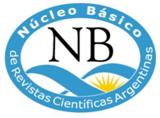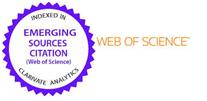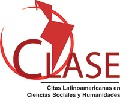Documenting the tropical natural world in the account of Antonio Pigafetta
Resumen
In the account of his journey of circumnavigation, Antonio Pigafetta (1492-c.1531) noted the uniqueness of the places that he had visited. In addition to peoples and landscapes, he described trees, fruits and herbs, as well as insects, birds, fish and mammals. He referred to numerous species, some of which were new to, or little known in the West.
In this essay, I will analyse Antonio Pigafetta’s references to the plants and animals observed during his overseas travels. The species recorded around the world suggest that he was both a keen observer and well resourced. His observations allowed him to describe a world which, united by the oceans, revealed a surprising continuity. For the Italian, many of the vegetable and animal species that he observed in the Americas, on the islands of Southeast Asia or on the vast oceans were similar to others spotted previously, in other regions, by European voyagers. From the Indies to the African coast and from the Atlantic to the Pacific, the globe navigated by Pigafetta demonstrated continuity never before attested to. Crossing boundaries established by political agreements and routes defined by commercial interests, the description of this unified and circumnavigable planet contributed, throughout the 16th century, to the emergence of a new way of understanding nature.
In this article, I will seek to identify, in some Early Modern botanical treatises, echoes of this new way of looking at the natural world, as proposed by Antonio Pigafetta.
Palabras clave
Texto completo:
PDFReferencias
Primary sources edited
BARBOSA, D., (1989). Livro do que viu e ouviu no Oriente, Lisboa: ALFA. [Edição de Luís de Albuquerque].
BAUHIN, C., (1623). Pinax Theatri Botanici, Basel: Ludovici Regis.
CONTI, N., (2004). Les voyages aux Indes de Nicolo de’Conti (1414-1439). [Introd. de G. BOUCHON e A. L. AMILHAT-SZARY; trad. D. MÉNARD, Paris: Chandeigne].
COSTA, C. da, (1578). Tractado de las Drogas y medicinas de las Indias Orientales con sus plantas debuxadas al vivo por Cristobal Acosta, Burgos: Martin de Victoria.
DALECHAMPS, J., (1586-1587). Historia Generalis Plantarum, Lyon: G. Rovillium.
FRAGOSO, J., (1572). Discurso de las cosas aromaticas, arboles y frutales y de otras muchas medicinas simples que se traen de la India Oriental, Madrid: Francisco Sánchez.
MARTYR d’ANGLERIA, P., (1989). Décadas del Nuevo Mundo. Crónicas y Memorias, Madrid: Ed. Polifemo.
MATTIOLI, P. A., (1572). Commentaires à Dioscoride, Lyon: G. Rouillé.
ORTA, G. de, (1913). Colloquies in the Simples and Drugs of India, Delhi: Sri Satguru Publications. [Transl. by Clements Markham].
ORTA, G. de, (1563). Colóquios dos Simples e Drogas e coisas Medicinais da Índia, Goa: J. de Endem.
PIGAFETTA, A., (2017). Le voyage de Magellan 1519-1522. La relation d’Antonio Pigafetta du premier tour du monde, Paris: Chandeigne. [Ed. and notes by X. de CASTRO].
PIGAFETTA, A., (2007). The first voyage around the world, Toronto: University of Toronto Press. [Ed. by T. G. CACHEY Jr.].
PIRES, T., (2017). Suma Oriental, Lisboa: CCCM, Fundação Jorge Álvares, Fundação de Macau. [Ed. R. M. LOUREIRO].
POLO, M., (2005 [1854]). The travels of Marco Polo, London: Elibron Classics.
TRANSILVANUS, M., (1523). De Molluccis Insulis, Roma: s/e.
VARTHEMA, L. de, (2004). Voyage de Ludovico Varthema en Arabie et aux Indes orientales (1503-1508), Paris: Chandeigne. [Trad. P. TEYSSIER, pref. J. AUBIN,].
Secondary sources
ALESSANDRINI, N., (2019). “Antonio Pigafetta, cavaleiro do mar oceano. Uma reconstituição biográfica”. Anais de História de Além-Mar, Nº XX, pp. 61-80.
ALMEIDA, O., (2011). “Experiência a madre das cousas – experience, the mother of things – on the ‘revolution of experience’ in 16th century Portuguese maritime discoveries and its foundational role in the emergence of the scientific worldview”, In M. BERBARA & K. A. ENENKEL (Eds), Portuguese Humanism and the Republic of Letters (pp. 381-400). Leiden, Holland: Intersections Book Series, Brill.
AVONTO, L., (1992). I compagni di Magellano com un’appendice sul roteiro di un piloto genovese, Montevideo-Roma: Ediciones El Galeon.
BANE, T., (2016). Encyclopedia of giants and Humanoids in myth, legends and folklore, Jefferson, North Carolina: McFarland & Company.
BARRERA-OSORIO, A., (2006). Experiencing nature. The Spanish American Empire and the the Early Scientific Revolution, Austin: University of Texas Press.
BLEICHMAR, D.; DE VOS, P.; HUFFINE, H. & SHEEHAN, K., (Eds.) (2009). Science in the Spanish and Portuguese Empires, 1500-1800, Stanford: Stanford University Press.
BOXER, C. R., (1963). Two pioneers in tropical medicine: Garcia de Orta and Nicolàs Monardes, Londres: The Hispanic and Luso-Brasilian Councils.
BRENTJES, S., (2016). “Issues of best historiographical practice: Garcia da Orta’s Colóquios dos Simples e drogas e cousas medicinais da India (Goa, 1563) and their conflicting interpretation.” In H. WENDT (Ed.), The Globalization of Knowledge in the Iberian Colonial World (pp. 95-136). Chicago: The University of Chicago Press.
CANIZARES-ESGUERRA, J., (2006). Nature, empire and nation. Explorations of the History of Science in Iberian World, Stanford: Stanford University Press.
CANOVA, A., (1999). Relazione del primo viaggio attorno el mondo, Padua: Antenore.
CANOVA, A., (2001). “Far away countries and useful books: remarks on Antonio Pigafetta and other travels in the Pacific in the beginning of the Sixteenth Century”. Studies in Travel Writing, Nº 5, pp. 1-34.
CARDONA, G.R., (1976). Introduzione all’ethnolinguistica, Bolonha: Il Mulino.
CARVALHO da SILVA, A., (1934). “Garcia d’Orta.” Revista da Universidade de Coimbra, Nº 12, pp. 61-246.
CARVALHO, L. De M. & FERNANDES, F., (2011). “Exotica Naturalia – O enigma do coco-do-mar”. Artis, Nº 9-10, pp. 153-162.
CARVALHO, T. N. de, (2006). “Imagens do mundo natural asiático na obra botânica de Cristóvão da Costa”. Revista de Cultura [Macau], Nº 20, pp. 28-39.
CARVALHO, T. N. de, (2013). "Local knowledge in Portuguese words: oral and manuscript sources in the Colloquies on the simples by Garcia de Orta". Host - Journal of History of Science and Technology, Nº 8, pp. 13-28.
CARVALHO, T. N. de, (2015). Os desafios de Garcia de Orta. Colóquios dos Simples e Drogas da Índia, Lisboa: Esfera do Caos.
CARVALHO, T. N. de, (2017). “The depictions of the spice that circumnavigated the globe. The contribution of Garcia de Orta’s Colóquios dos Simples (Goa, 1563) to the construction of an entirely new knowledge about cloves”. Abriu, Estudos de textualidade do Brasil, Galicia e Portugal, Nº 6, pp. 189-212.
CARVALHO, T. N. de, (2020). “The natural frontiers of a global empire. The pineapple – Ananas comosus – in the Portuguese sources of the 16th century”. Humanities, Nº 9, 89.
CASTRO, X.; HAMON, J. & THOMAZ, L. F., (2007). Le voyage de Magellan (1519-1522). La relations d’Antonio Pigafetta et autres temoignages, Paris: Éditions Chandeigne.
CHIAPPELLI, F., (Ed.) (1976). First Images of America: The Impact of the New World on the Old, Berkeley: University of California Press.
CUNNINGHAM, R. O., (1871). Notes on the Natural History of the Strait of Magellan and west coast of Patagonia made during the voyage of H.M.S. Nassau in the years 1866, Edimburgo: Edmonston & Douglas.
CUNHA, A. P, da; DA SILVA, A. P. & ROQUE, O. R., (2009). Plantas e Produtos Vegetais em Fitoterapia, Lisboa: Fundação Calouste Gulbenkian.
CUNHA, A. P. da & ROQUE, O. R., (2015). Especiarias e plantas condimentares. Origem, composição e utilizações, Lisboa: Fundação Calouste Gulbenkian.
DASTON, L. & PARK, K., (1998). Wonders and the Order of Nature, 1150–1750, New York: Zone Books.
DELBOURGO, J. & DEW, N., (Eds.) (2008). Science and Empire in the Atlantic World, New York and London: Routledge.
DENUCÉ, J., (1911). Magellan – La question des Moluques et la Première Circumnavigation du globe, Bruxelles: Hayez.
DOMINGUES, F. C., (2007). “Science and Technology in Portuguese Navigation: The Idea of Experience in the Sixteenth Century.” In F. BETHENCOURT & D. RAMADA CURTO (Eds.), Portuguese Oceanic Expansion, 1400–1800 (pp. 460-479). Cambridge: Cambridge University Press.
DONKIN, R., (2003). Between East and the West: The Moluccas and the traffic in spices up to the arrival of the Europeans, Philadelphia: American Philosophical Society.
EGMOND, F., (2016). “Figuring exotic nature in Sixteenth century Europe: Garcia de Orta and Carolus Clusius”. In P. F. da COSTA (Ed.), Medicine, Trade and Empire. Garcia de Orta’s Colloquies of Simples and Drugs of India in context (pp. 167-194). London and New York: Routledge.
ELLIOTT, J. H., (1992). The Old World and the New: 1492–1650, Cambridge: Cambridge University Press.
FERRÃO, J. E. M., (1993). Especiarias, Cultura. Tecnologia. Comércio, Lisboa: MPAT, SECT & IICT.
FERRÃO, J. E. M., (2015). Le voyage des plantes et les grandes découvertes, Paris: Chandeigne.
FICALHO, Conde de, (1886). Garcia de Orta e o seu tempo, Lisboa: Imprensa Nacional.
FINDLEN, P., (1994). Possessing Nature. Museums, collecting and scientific culture in Early Modern Italy, Berkeley: University of California Press.
GARCIA, J. M., (2007). Fernão de Magalhães e os portugueses, Lisboa: Editorial Presença.
GERBI, A., (1985). Nature in the New World. From Cristopher Columbus to Gonzalo Fernández de Oviedo, Pittsburgh: University of Pittsburgh Press.
GIL, J. & VARELA, C., (1984). Cartas de particulares a Colón y relaciones coetáneas, Madrid: Alianza Editorial.
GOODMAN, D., (1988). Power and Penury: Government, Technology and Science on Philip II’s Spain, Cambridge: Cambridge University Press.
GRAFTON, A., (1995). New Worlds, Ancient Texts: The Power of Tradition and the Shock of Discovery, Cambridge, MA: Belknap Press of Harvard University Press.
LADERO-QUESADA, M. Á., (2008). “La descripción del Nuevo Mundo en la primera mitad del siglo XVI: Pedro Mártir de Angleria y Gonzalo Fernández de Oviedo”. Catharum, Revista de Ciencias y Humanidades, Nº 9, pp. 17-28.
LAGOA, Visconde de (1938). Fernão de Magalhães (a sua vida e a sua viagem, Lisboa: Seara Nova.
LAUFER, B., (1929). “The American plant migration”. The Scientific Monthly, Nº 28/3, pp. 239-251.
LAUFER, B., (1938). The American plant migration. The potato, Chicago Field Museum of Natural History.
LEITÃO, H. & SÁNCHEZ, A., (2017). “Too much to tell: Narratives styles of the first descriptions of the natural world of the Indies”. History of Science, Nº 55, pp. 167-186.
LIDA de MALKIEL, M. R., (1952). “Para la toponimia argentina: Patagonia”. Hispanic Review, Nº 20, pp. 321-323.
LOBATO, M., (1999). “O cravo, as Molucas e as especiarias”. En I. GUERREIRO (Coord.), A epopeia das especiarias (pp. 104-130). Lisboa: IICT; INAPA.
LOPES, M. dos S., (2006). “A revelação das plantas. Garcia de Orta, Carolus Clusius e as espécies asiáticas na Europa”. Revista de Cultura, Nº 20, pp. 28-39.
LÓPEZ-PIÑERO, J. M., (2002). Historia de la Ciencia y de la Técnica en la Corona de Castilla, Salamanca: Junta de Castilla y Léon, Consejeria de Educación y Cultura. 4 vols.
LÓPEZ-PIÑERO, J. M. & J. PARDO-TOMAS, (1994). Nuevos materiales y noticias sobre la historia de las plantas de Nueva España, de Francisco Hernández, Valencia: CSIC.
LOUREIRO, R. M., (2006). “Betel chewing in 16th century European sources”. Revista de Cultura, Nº 20, pp. 49-63.
LOUREIRO, R. M., (2012). “Information networks in the Estado da India, a case study: was Garcia de Orta the organizer of Codex Casanatense 1889?” Anais de Historia de Alem-Mar, Nº 14, pp. 41-72.
LOUREIRO, R. M., (2019). “Em demanda da biblioteca de Fernão de Magalhães”. En R. M. LOUREIRO, Em demanda da biblioteca de Fernão de Magalhães (pp. 17-48). Lisboa: Biblioteca Nacional de Portugal.
MARCAIDA, J. R., (2014). Arte y Ciencia en el barroco español. Historia natural, coleccionismo y cultura visual, Madrid and Sevilla: Marcial Pons Historia.
MASON, P., (2009). Before Disenchantment: Images of Exotic Animals and Plants in the Early Modern World, London: Reaktion Books.
OLMI, G., (1992). L’inventario del mondo. Catalogazione della natura et luogui del sapere nella prima età moderna, Bolonha: Il Mulino.
PAGDEN, A., (1993). European Encounters with the New World: From Renaissance to Romanticism, New Haven, CT: Yale University Press.
PARDO-TOMAS, J., (2007). “Two glimpses of America from a distance: Carolus Clusius and Nicolas Monardes.” In F. EGMOND, P. HOFTIJER & R. VISSER (Eds.), Carolus Clusius. Towards a cultural history of Renaissance naturalist (pp. 173-193). Ansterdam: Edita-KNAW.
PARDO-TOMAS, J., (2016). “East Indies, West Indies: Garcia de Orta and the Spanish Treatises on Exotic Materia Medica”. In P. FONTES DA COSTA (Ed.), Medicine, Trade and Empire: Garcia de Orta’s Colloquies on the Simples and drugs of India in Context (pp. 195–212). New York: Routledge.
PEARSON, M., (1996). Spices in the Indian Ocean World. Expanding World, Aldershot: Ashgate.
PIMENTEL, J., (2001). “The Iberian Vision: Science and Empire in the Framework of a Universal Monarchy, 1500-1899”. Osiris, Nº 15, pp. 17-30.
PIMENTEL, J. & SOLER, I., (2014) “Painting Naked Truth: The Colóquios of Garcia de Orta (1563)”. Journal of Early Modern History, Nº 18, pp. 101-120.
PORTUONDO, M., (2009). Secret Science. Spanish Cosmography and the New World, Chicago: The University of Chicago Press.
POZZO, G. da, (2005). “Serenitá et ambiguitá nella relazione di Antonio Pigafetta”. Italica, Nº 82, pp. 426-450.
RODRÍGUEZ-NOZAL, R. & GOZÁLEZ-BUENO, A., (2000). El Tractado de las Drogas de Cristobal de Acosta (Burgos, 1578). Utilidad comercial y matéria medica de las Indias Orientales en la Europa renacentista, Ediciones de Cultura Hispanica; Agencia Española de Cooperación Internacional.
SÁNCHEZ, A., (2010). “La voz de los artesanos en el Renacimiento científico: cosmógrafos y cartógrafos en el preludio de la nueva filosofía natural”. Arbor, Nº 186, pp. 449-460.
SANZ, L. T., (1975). “El mondo indígena conocido por Magallanes en las islas de San Lazaro”. In A. TEIXEIRA da MOTA (Ed.), A viagem de Fernão de Magalhães e a questão das Molucas (pp. 381-409). Lisboa: Junta de Investigações do Ultramar.
SCHIEBINGER, L. & SWAN, C., (2006). Colonial Botany. Science, Commerce and Politics in Early Modern Europe, Philadelphia: University of Pennsylvania Press.
SILVA, C. R. de, (1987). “The Portuguese and the trade of cloves in Asia during the sixteenth century”. Studia, Nº 46, pp. 135-146.
TEIXEIRA DA MOTA, A., (Org.) (1975). A viagem de Fernão de Magalhães e a questão das Molucas. Actas do II Colóquio Luso-Espanhol de História Ultramarina, Lisboa: Junta de Investigações Científicas do Ultramar. Centro de Estudos de Cartografia Antiga.
THOMAZ, L. F., (1975). “Maluco e Malaca”. In A. TEIXEIRA DA MOTA, (Ed.), A viagem de Fernão de Magalhães e a Questão das Molucas (pp. 29-48). Lisboa: Junta de Investigações do Ultramar.
THOMAZ, L. F., (1995). “Especiarias do Velho e do Novo Mundo (notas histórico-filosóficas)”. Arquivos do Centro Cultural Calouste Gulbenkian, Nº 34, pp. 219-345.
VAGNON, E., (2010). “De la Grèce Antique au voyage de Magellan. Les modèles humanistes d’Antonio Pigafetta et Maximilianus Transilvanus”. Médievales, Nº 58, pp. 99-111.
Enlaces refback
- No hay ningún enlace refback.
Copyright (c) 2020 Magallánica : revista de historia moderna

Este obra está bajo una licencia de Creative Commons Reconocimiento-NoComercial-CompartirIgual 4.0 Internacional.
 | Magallánica : Revista de Historia Moderna es editada por el Grupo de Investigación en Historia de Europa Moderna de la Facultad de Humanidades de la Universidad Nacional de Mar del Plata y por la Red de Historia Moderna ISSN 2422-779X (en línea)
|
La Dirección no se responsabiliza por las opiniones vertidas en los artículos firmados. | |
Resultados de evaluación: Magallánica... es evaluada por:
Magallánica...se encuentra en las siguientes bases de datos:
Miembro de:
| |



























